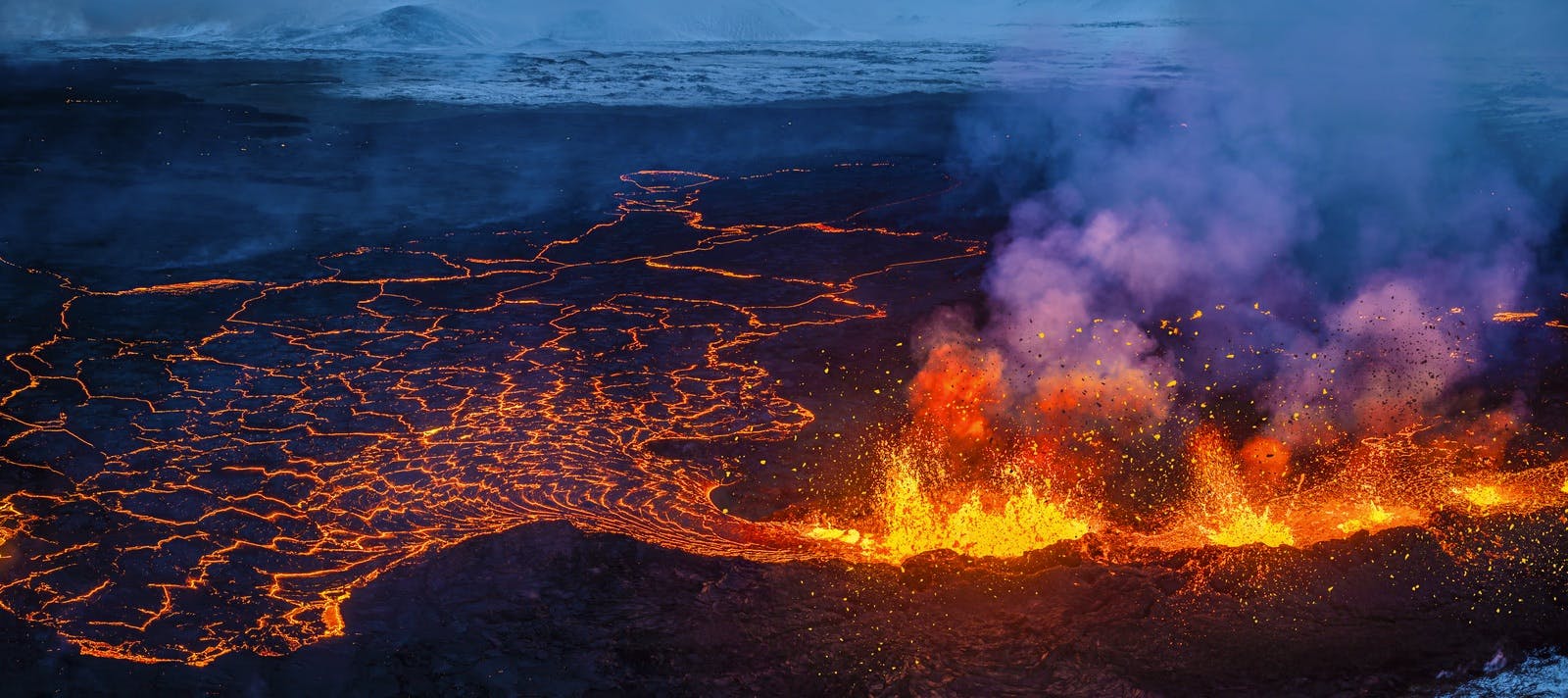
Sundhnúkagígar Eruption December 2023
Following weeks of earthquakes, a volcanic eruption named Sundhnúkagígar unfolded on the Reykjanes Peninsula in December 2023. Positioned between Sýlingarfell and Hagafell, Sundhnúkagígar began erupting at 22:17 on December 18, 2023. A prominent fissure emerged, propelling massive streams of lava into the sky. The fissure extended nearly 4 km in length before ceasing three days later.
The eruption was in close proximity to other recent volcanic events on the Reykjanes Peninsula, a region that reawakened in 2021 after several hundred years of quiet.
The initial lava flows were staggering. Notably, the lava flow from Sundhnúkagígar surpassed that of its predecessors, marking a significant increase in intensity. In the initial two hours, it was estimated that the lava was flowing at a rate of several hundred cubic meters per second. The most substantial lava fountains were observed at the northern end of the fissures.
The intensity of the volcanic eruption started decreasing only a day after the eruption occurred. On December 21st, 3 days after the eruption, an ariel survey was conducted which reported no visible eruptive activity.
Earthquakes Before the December 2023 Eruption
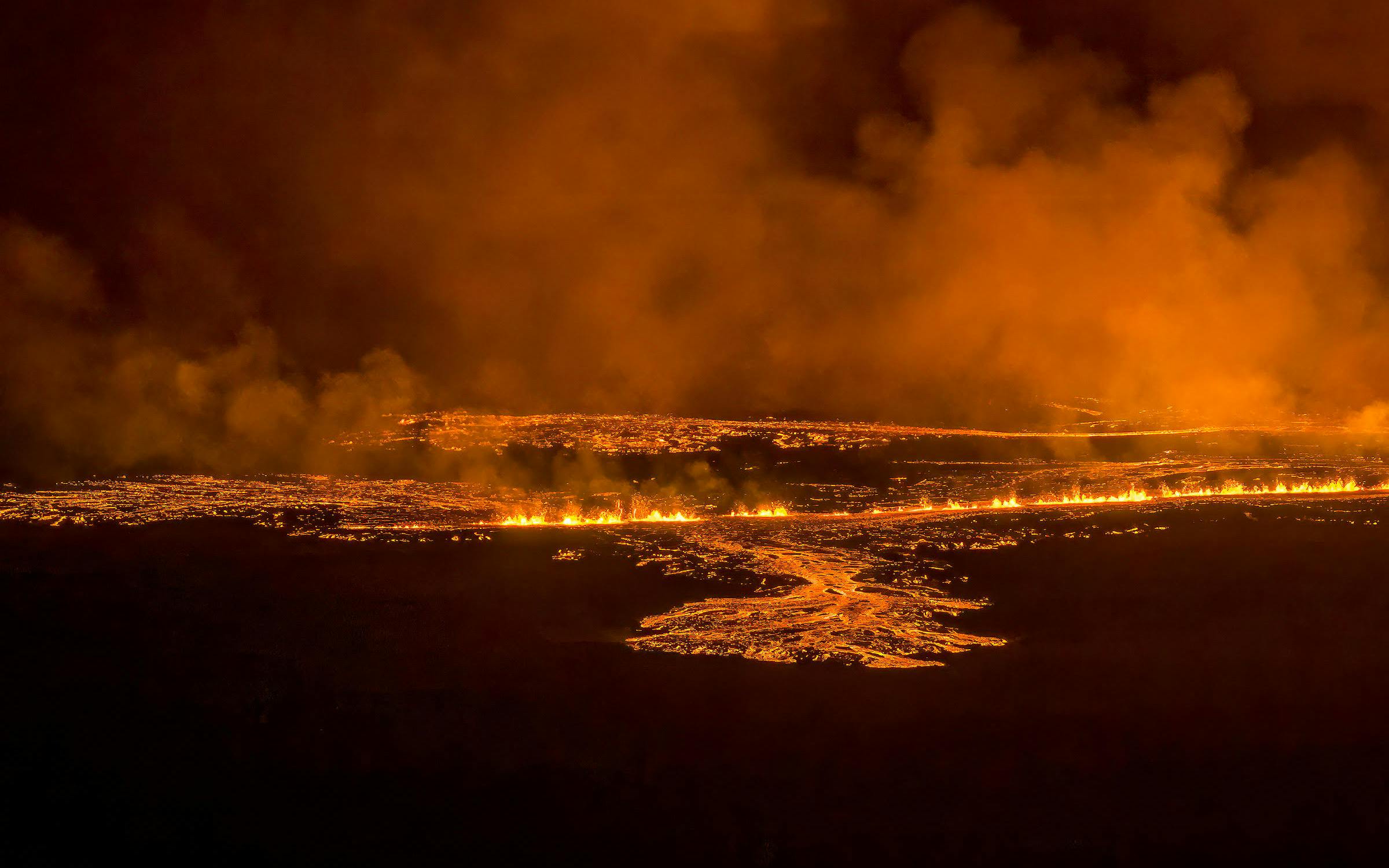
The signs of an imminent eruption were present for several weeks as a seismic swarm hit the Reykjanes peninsula in southwest Iceland. There were more than 5,500 small earthquakes in late October 2023, raising the prospect of a volcanic eruption. All local geologists had their eyes set on the Reykjanes peninsula.
Before some volcanic eruptions, specific signs may indicate an eruption is more likely, such as increased seismic activity, gas emissions, and changes in temperature in the area surrounding the volcano. However, these signs are not always present, and eruptions can occur with minimal warning.
Iceland is a seismic and volcanic hot spot as the North American and Eurasian tectonic plates move in opposite directions. While quakes are a daily occurrence in Iceland, the latest swarm was more extensive than usual, indicating an eruption could be imminent.
Other recent Eruptions on the Reykjanes Peninsula
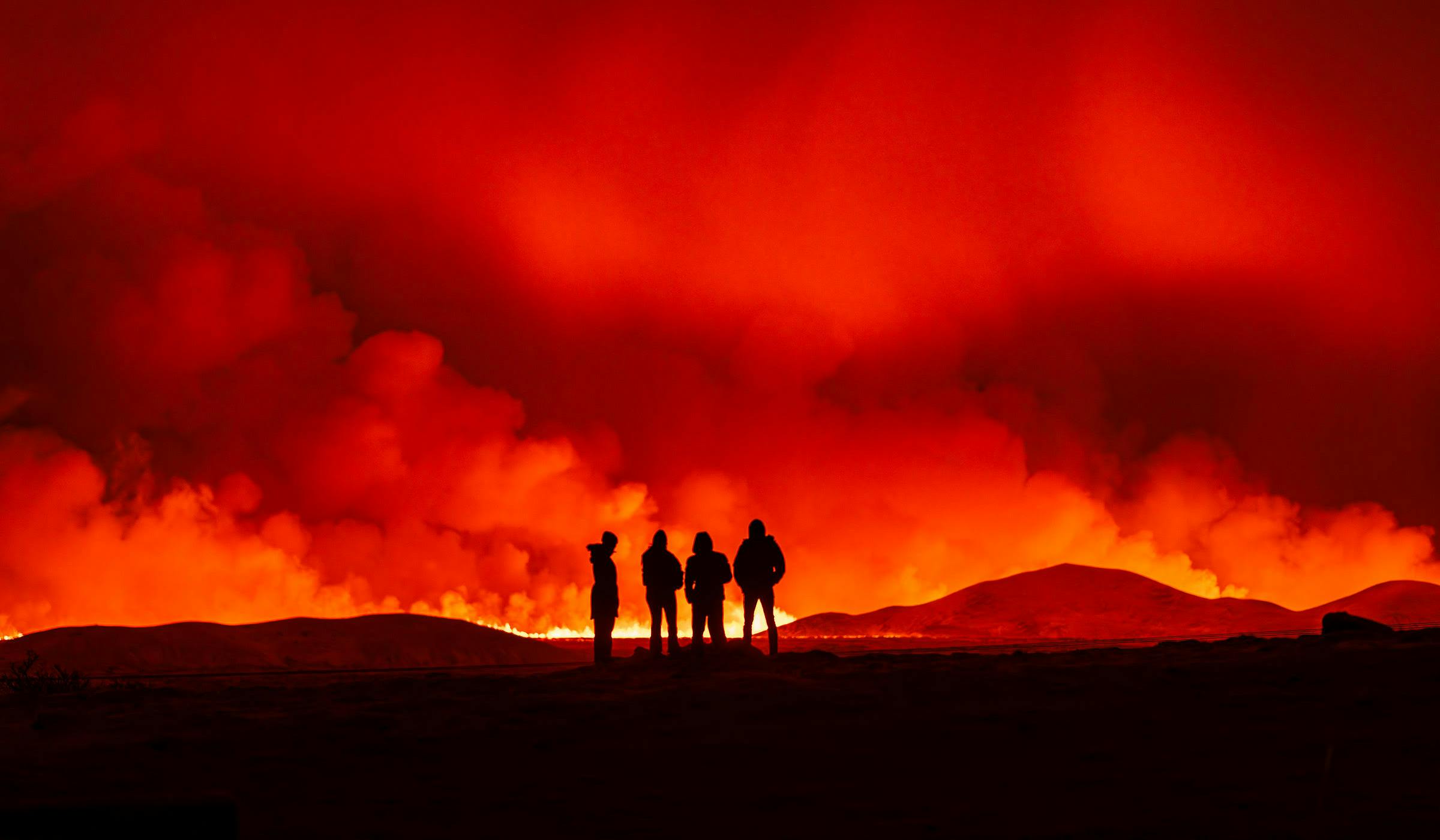
There hadn’t been a volcanic eruption for 815 years on the Reykjanes Peninsula until 19 March 2021. The area awakened after 53,000 tremors had shaken the surrounding area of Geldingadalir. The volcanic fissure was 700 metres long, just south of Fagradalsfjall mountain. The 2021 eruption emitted fresh lava until 18 September 2021.
Another eruption began on 3 August 2022 and ended on 21 August 2022, just 10 months after the eruption in 2021. Several weeks before the event, a series of earthquakes occurred, with the most intense ones registering over 5.0 on the Richter scale. This seismic activity foreshadowed the eventual opening of a 300-meter volcanic fissure in Meradalir Valley, which emitted 20-50 square meters of lava every second. This volcanic eruption took place approximately 0.6 miles (1 kilometre) from the site of the 2021 eruption.
On 10 July 2023, just 11 months after the last eruption, the new crack sparked excitement from locals and tourists alike. The third eruption in three years, a 900 metre fissure, followed thousands of earthquakes over a period of several days. Magma broke through the surface, shooting fountains of lava metres into the air. The eruption site was named Litli-Hrútur (Little Ram). The eruption ended on 5 August 2023 in the Fagradalsfjall volcano system.
Where Can You Learn About Volcanoes in Iceland?
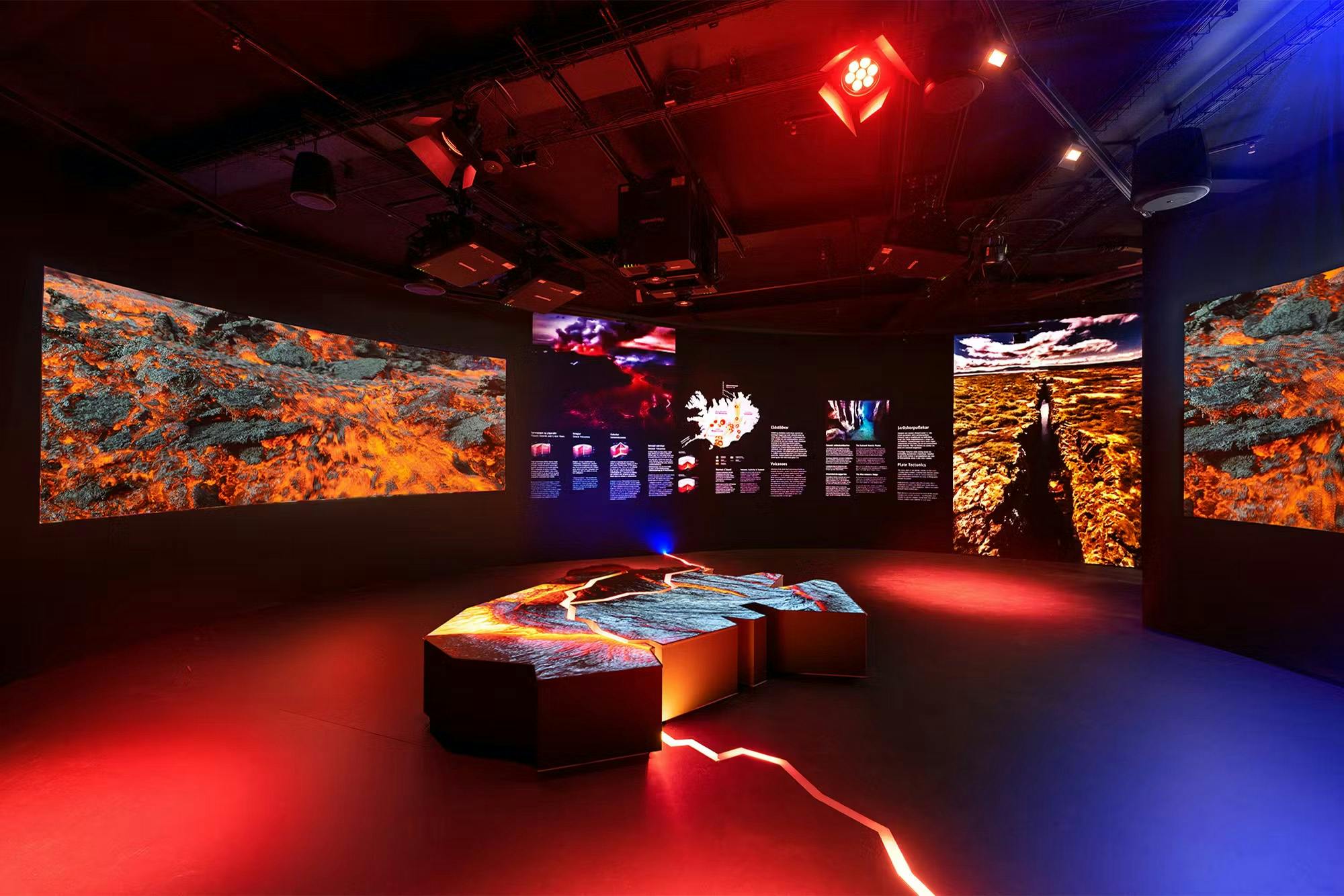
Perlan’s Forces of Nature exhibition allows guests to feel the power of volcanoes, earthquakes, and geothermal energy that powers the island. Guests will learn that volcanoes form when heat and pressure build up beneath the earth’s surface. The earth’s weak points tend to be along fault lines where tectonic plates converge or diverge, as in Iceland’s case.
Perlan’s exhibition shows that volcanic activity in Iceland is so diverse that researchers typically speak of “volcanic systems” rather than individual volcanoes. The island has 30 active volcanic systems, each with many types of volcanoes.
Whether you’re planning a visit or just fascinated by geology, it’s worth checking which active volcanoes Iceland is monitoring closely this year.
Events Leading up to the December Eruption 2023
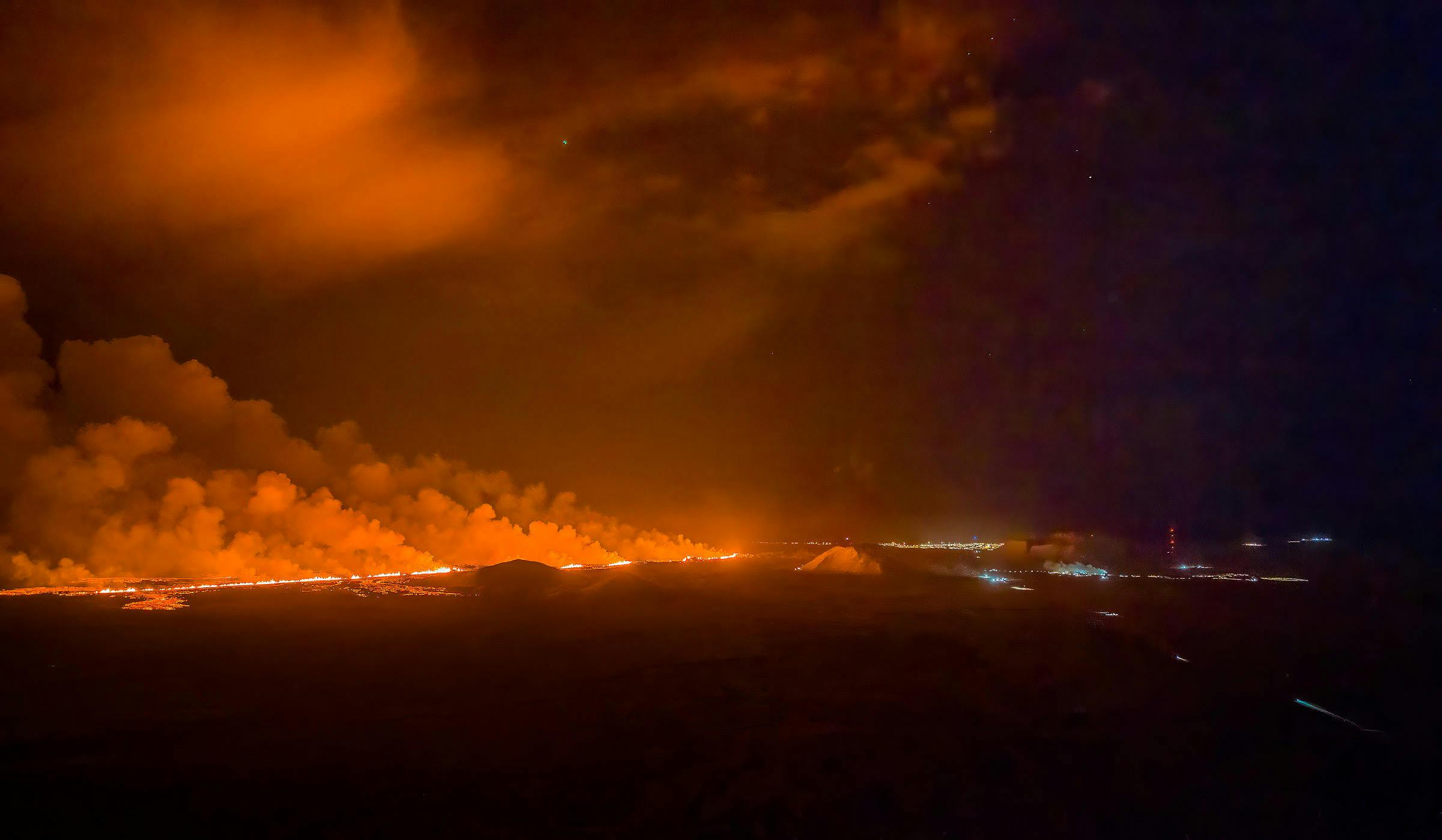
The Beginning (End of October)
The Reykjanes Peninsula in Iceland experienced significant seismic activity from October 25 to 30, 2023, with thousands of earthquakes, some reaching a magnitude of 4.5. This activity was concentrated in areas between Stóra-Skógfell and northeast of Eldvörp, and north of Grindavík near Svartsengi.
The Icelandic Meteorological Office linked these tremors to underground magma movements, especially following the summer 2023 eruption at Fagradalsfjall. Satellite and GPS data indicated ground uplift in the region, suggesting increased underground pressure due to magma intrusion.
The area saw continuous ground deformation, with about 1300 earthquakes recorded towards the end of October. The geological instability was due to multiple underground forces, with experts closely monitoring magma behavior and implications for ground deformation.
Seismic Activity: October 31 - November 6, 2023
A new series of earthquakes was observed at Mount Þorbjörn, with over 10,500 earthquakes recorded by November 1. Ground movement northwest of Mount Þorbjörn indicated a volcanic intrusion.
The seismic activity fluctuated over the following days, with notable earthquakes recorded and ongoing uplift due to magma accumulation. Experts linked the seismic activity to an accelerating uplift, especially at the GNSS station on Mount Þorbjörn.
Week 3 of Earthquakes in Reykjanes: November 7-14, 2023
Continued seismic activity was reported with over 700 earthquakes, including significant events near Hagafell. Sulfur dioxide emissions indicated close-to-surface magma activity.
Seismic activity and magma intrusion resulted in approximately 900 earthquakes around Grindavík. Satellite data showed significant ground deformation, and authorities implemented measures in response to potential volcanic threats.
Week 4 of the Reykjanes Volcano: November 15-22, 2023
A surge in seismic activity was observed, with daily earthquakes exceeding 800, and significant geological shifts indicated increased magmatic activity.
Despite a slowdown in ground subsidence, the risk of an eruption remained, with signs of ongoing geological changes. Monitoring was challenged by adverse weather conditions.
The Seismic Activity Decreases: November 23-30
A gradual decrease in seismic activity was noted, with the rate of uplift near Svartsengi continuing. The majority of the displacement was attributed to inflow under Svartsengi.
The risk of a sudden eruption was assessed as low, but an eruption was still considered possible, most likely east of Sýlingarfell.
Last Update Before the Eruption
The magma inflow to the November 10th dike likely ceased, reducing eruption chances along this dike. However, continuous magma accumulation beneath Svartsengi raised the possibility of new volcanic events.
The last report before the eruption was on December 16th stating that it was too premature to determine whether the magma build-up at Svartsengi has ceased and if the area's expansion has concluded. There had been a slight reduction in the deformation rate, but experts will continue to evaluate the data in the following days.
FAQ
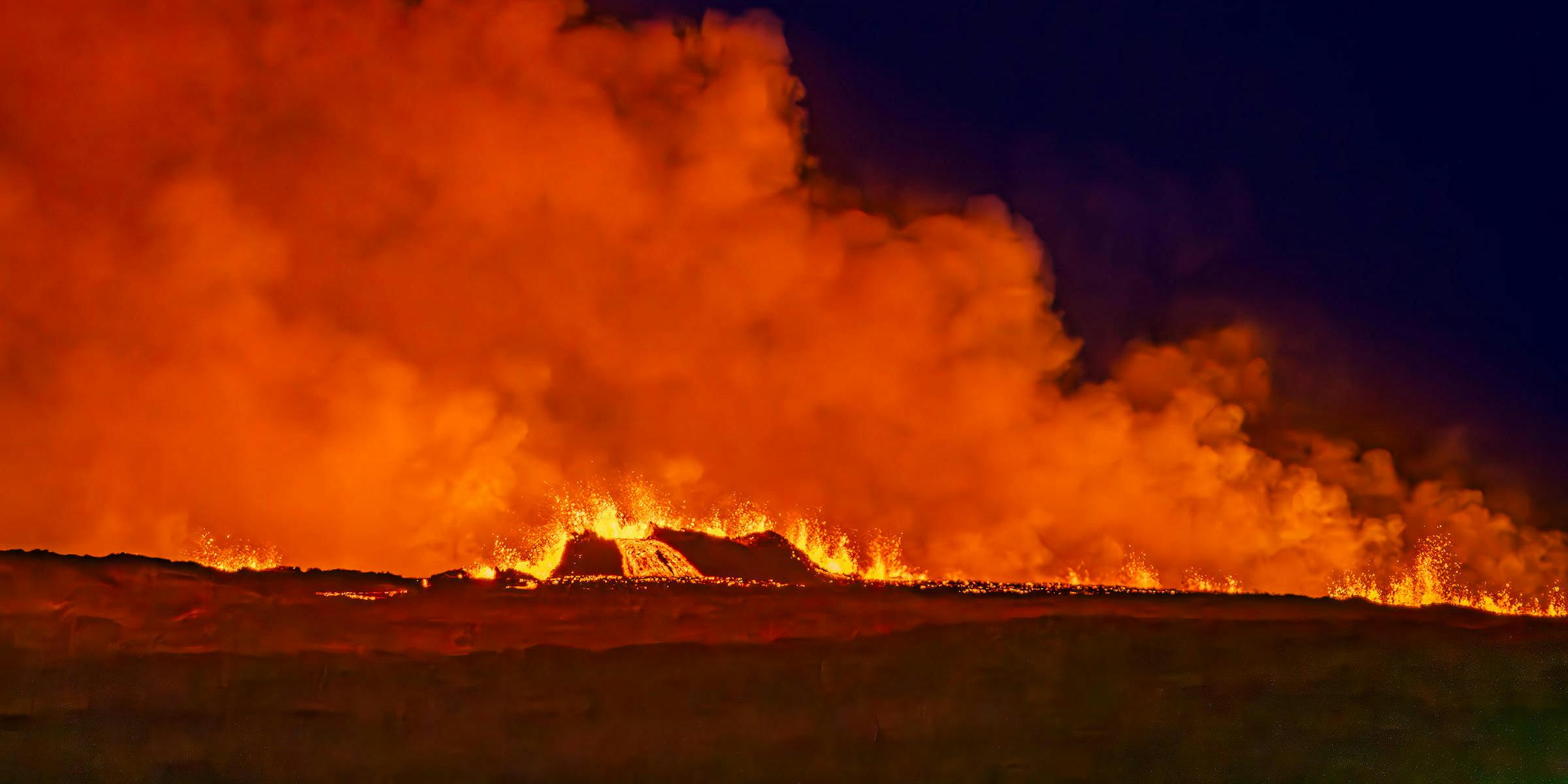
Is it safe to visit an eruption site?
There are several factors to consider before visiting an erupting volcano. When a volcano erupts, visibility can be low, and dangerous gas levels can shift quickly and be harmful. Make sure you check safetravel.is for the latest updates on safety conditions. The authorities can always close access to the hiking trail if gas levels reach a dangerous level or if weather conditions are poor.
How do you pronounce Sundhnúkagígar?
It is pronounced “Sund-h-new-ka-ghee-gar”.
When did the Reykjanes Eruption Sundhnúkagígar erupt in 2023?
The eruption started December 18, 2023 at 22:17.







